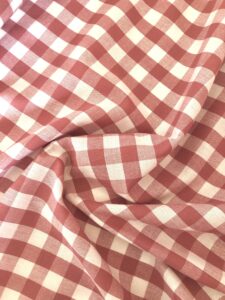How to Prevent Cotton and Polyester from Pilling
Introduction
Fabric compatibility is crucial in fashion and sewing, impacting the durability and appearance of garments. Cotton and polyester, popular choices in the textile industry, can be mixed to create versatile and functional pieces. This article explores how to prevent pilling when combining these fabrics, ensuring your creations remain pristine and long-lasting.
Compatibility Analysis
YES, cotton and polyester can be blended effectively. This combination leverages the softness and breathability of cotton with the durability and wrinkle resistance of polyester. Key factors ensuring compatibility include:
- Texture and Weight: Cotton’s soft texture pairs well with polyester’s smoothness, creating a balanced fabric.
- Stretch: Polyester adds elasticity, enhancing comfort and fit.
- Care Requirements: Both fabrics can be machine-washed, though polyester’s resilience to high temperatures must be considered.
- Durability: Polyester enhances the wear resistance of cotton, reducing the likelihood of damage over time.
Fabric Properties Comparison Table
| Property | Cotton | Polyester |
|---|---|---|
| Fiber Content | Natural | Synthetic |
| Weight and Thickness | Medium | Light to medium |
| Breathability | High | Low |
| Moisture-Wicking | Moderate | High |
| Stretch and Elasticity | Low | Moderate to high |
| Wrinkle Resistance | Low | High |
| Care Instructions | Warm wash, iron on high | Cold wash, low iron |
| Durability | Moderate | High |
Benefits of Mixing These Fabrics
Mixing cotton and polyester offers several advantages:
- Enhanced Texture: The blend creates a visually appealing and tactilely interesting fabric.
- Improved Comfort: Polyester’s elasticity complements cotton’s breathability.
- Better Drape: The combination achieves a fluid movement, ideal for garments and home decor.
- Cost-Effectiveness: Polyester reduces the overall cost while maintaining quality.
- Seasonal Versatility: Suitable for both warm and cool climates.
- Design Possibilities: Offers diverse styling options, from casual wear to elegant home furnishings.
Potential Challenges
While beneficial, blending these fabrics poses challenges:
- Different Shrinkage Rates: Pre-wash fabrics to minimize discrepancies.
- Conflicting Care Requirements: Follow the most delicate care instructions.
- Texture Clash: Opt for compatible weaves to reduce pilling.
- Seam Puckering: Use proper tension and stitch length.
- Color Bleeding: Test for colorfastness before combining.
Solutions: Use a fabric stabilizer to maintain shape and consider blending with similar color palettes to avoid bleeding.
Sewing & Styling Tips
- Sewing Techniques: Use a zigzag stitch for elasticity.
- Needle and Thread: A universal needle (size 80/12) and polyester thread work well.
- Interfacing: Lightweight interfacing supports structure without adding bulk.
- Seam Finishing: Overlock or serge seams to prevent fraying.
- Pattern Selection: Choose patterns with simple lines to highlight the fabric blend.
- Styling Ideas: Pair with neutral tones for a classic look or bold colors for a modern twist.
Care & Maintenance Guide
- Washing: Use cold water and gentle detergent.
- Drying: Air dry or tumble dry on low to prevent shrinkage.
- Ironing: Use a low setting for polyester; a steam iron is ideal for cotton.
- Stain Removal: Treat stains promptly with appropriate cleaners for each fabric type.
- Long-term Care: Store in a cool, dry place to prevent mildew and fading.
FAQ Section
Can you wash cotton and polyester together?
Yes, but use cold water and a gentle cycle to protect both fabrics.
Will cotton shrink more than polyester?
Yes, cotton is prone to shrinkage, so pre-washing is recommended.
What needle size should I use for sewing these fabrics together?
A universal needle size 80/12 is suitable for both fabrics.
Can you mix cotton and polyester in one garment?
Absolutely, this blend is common in many garments for its durability and comfort.
How do you prevent pilling when combining these fabrics?
Use a fabric softener and avoid high-friction washing.
Is it okay to mix cotton and polyester for upholstery?
Yes, this blend is durable and easy to clean, making it ideal for upholstery.
What’s the best way to finish seams with these fabrics?
Using an overlock or serge stitch will prevent fraying and ensure durability.
By understanding the properties and care requirements of cotton and polyester, you can create beautiful and durable pieces that resist pilling and maintain their appeal over time.

Leave a Reply